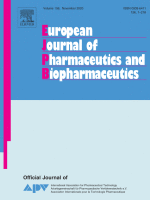|
Autors/es Monge, Marta; Fornaguera, Cristina |
Abstract During the last few decades, extensive efforts has been made to design nanocarriers to transport drugs into the central nervous system (CNS). However, its efficacy is limited due to the presence of the Blood-Brain Barrier (BBB) which greatly reduces drug penetration making Drug Delivery Systems (DDS) necessary. Polymeric nanoparticles (NPs) have been reported to be appropriate for this purpose and in particular, poly(lactic-co-glycolic acid) (PLGA) has been used for its ability to entrap small molecule drugs with great efficiency and the ease with which it functionalizes NPs. Despite the fact that their synthetic identity has been studied in depth, the biological identity of such manufactured polymers still remains unknown as does their biodistribution and in vivo fate. This biological identity is a result of their interaction with blood proteins, the so-called “protein corona” which tends to alter the behavior of polymeric nanoparticles in the body. The aim of the present research is to identify the proteins bounded to polymeric nanoparticles designed to selectively interact with the BBB. For this purpose, four different PLGA NPs were prepared and analyzed: (i) “PLGA@Drug,” in which a model drug was encapsulated in its core; (ii) “8D3-PLGA” NPs where the PLGA surface was functionalized with a monoclonal anti-transferrin receptor antibody (8D3 mAb) in order to specifically target the BBB; (iii) “8D3-PLGA@Drug” in which the PLGA@Drug surface was functionalized using the same antibody described above and (iv) bare PLGA NPs which were used as a control. Once the anticipated protein corona NPs were obtained, proteins decorating both bare and functionalized PLGA NPs were isolated and analyzed. Apart from the indistinct interaction with PLGA NPs with the most abundant serum proteins, specific proteins could also be identified in the case of functionalized PLGA NPs. These findings may provide valuable insight into designing novel vehicles based on PLGA NPs for crossing the BBB. |
Altmetrics
|
|
Publicació European Journal of Pharmaceutics and Biopharmaceutics, November 2020, v.156, p.155-164 |
||
|
Data de publicació 2020-11-01 |
||
|
DOI |



